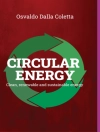Meeting the need for a reliable publication on the topic and reflecting recent breakthroughs in the field, this is a comprehensive overview of color quality of solid-state light sources (LED-OLED and laser) and conventional lamps, providing academic researchers with an in-depth review of the current state while supporting lighting professionals in understanding, evaluating and optimizing illumination in their daily work.
قائمة المحتويات
Preface xi
1 Introduction 1
References 9
2 Color Appearance and Color Quality: Phenomena and Metrics 11
2.1 Color Vision 11
2.2 Colorimetry 16
2.2.1 Color-Matching Functions and Tristimulus Values 17
2.2.2 Chromaticity Diagram 19
2.2.3 Interobserver Variability of Color Vision 20
2.2.4 Important Concepts Related to the Chromaticity Diagram 21
2.2.5 Mac Adam Ellipses and the u′ − v′ Chromaticity Diagram 24
2.3 Color Appearance, Color Cognition 26
2.3.1 Perceived Color Attributes 26
2.3.2 Viewing Conditions, Chromatic Adaptation, and Other Phenomena 28
2.3.3 Perceived Color Differences 29
2.3.4 Cognitive Color, Memory Color, and Semantic Interpretations 29
2.4 The Subjective Impression of Color Quality and Its Different Aspects 31
2.5 Modeling of Color Appearance and Perceived Color Differences 35
2.5.1 CIELAB Color Space 36
2.5.2 The CIECAM02 Color Appearance Model 37
2.5.3 Brightness Models 41
2.5.3.1 The CIE Brightness Model 43
2.5.3.2 The Ware and Cowan Conversion Factor formula (WCCF) 44
2.5.3.3 The Berman et al. Model 44
2.5.3.4 Fotios and Levermore’s Brightness Model 45
2.5.3.5 Fairchild and Pirrotta’s L∗∗ Model of Chromatic Lightness 45
2.5.4 Modeling of Color Difference Perception in Color Spaces 45
2.5.4.1 CIELAB Color Difference 45
2.5.4.2 CAM02-UCS Uniform Color Space and Color Difference 46
2.6 Modeling of Color Quality 48
2.6.1 Color Fidelity Indices 49
2.6.1.1 The CIE Color-Rendering Index 49
2.6.1.2 The Color Fidelity Index of the CQS Method 52
2.6.1.3 The Color Fidelity Index CRI2012 (n CRI) 53
2.6.1.4 The Color Fidelity Index Rf of the IES Method (2015) 56
2.6.1.5 RCRI 57
2.6.1.6 Summary of the Deficiencies of Color Fidelity Metrics 57
2.6.2 Color Preference Indices 57
2.6.2.1 Judd’s Flattery Index 57
2.6.2.2 Gamut Area Index (GAI) in Combination with CIE Ra 58
2.6.2.3 Thornton’s Color Preference Index (CPI) 58
2.6.2.4 Memory Color Rendition Index Rm or MCRI 58
2.6.2.5 The Color Preference Indices of the CQS Method (Qa, Qp) 60
2.6.3 Color Gamut Indices 61
2.6.3.1 The Color Gamut Index of the CQS Method (Qg ) 62
2.6.3.2 The Feeling of Contrast Index (FCI) 62
2.6.3.3 Xu’s Color-Rendering Capacity (CRC) 62
2.6.3.4 Gamut Area Index (GAI) 62
2.6.3.5 Fotios’ Cone Surface Area (CSA) Index 62
2.6.3.6 The Color Gamut Index Rg of the IES Method (2015) 62
2.6.3.7 Deficiencies of Color Gamut Metrics 63
2.6.4 Color Discrimination Indices 63
2.7 Summary 64
References 65
3 The White Point of the Light Source 71
3.1 The Location of Unique White in the Chromaticity Diagram 74
3.2 Modeling Unique White in Terms of L − M and L + M − S Signals 77
3.3 Interobserver Variability of White Tone Perception 78
3.4 White Tone Preference 83
3.5 The White Tone’s Perceived Brightness 85
3.6 Summary and Outlook 87
References 89
4 Object Colors – Spectral Reflectance, Grouping of Colored Objects, and Color Gamut Aspects 91
4.1 Introduction: Aims and Research Questions 91
4.2 Spectral Reflectance of Flowers 94
4.3 Spectral Reflectance of Skin Tones 96
4.4 Spectral Reflectance of Art Paintings 97
4.5 The Leeds Database of Object Colors 98
4.6 State-of-the-Art Sets of Test Color Samples and Their Ability to Evaluate the Color Quality of Light Sources 100
4.7 Principles of Color Grouping with Two Examples for Applications 114
4.7.1 Method 1 – Application of the Theory of Signal Processing in the Classical Approach 1204.7.2 Method 2 – the Application of a Visual Color Model in the Classical Approach 121
4.7.3 Method 3 – the Application of Visual Color Models in the Modern Approach 121
4.7.4 First Example of Color Grouping with a Specific Lighting System Applying Two Methods 122
4.7.5 Second Example of Applying Method 3 by Using Modern Color Metrics 123
4.8 Summary and Lessons Learnt for Lighting Practice 125
References 126
5 State of the Art of Color Quality Research and Light Source Technology: A Literature Review 129
5.1 General Aspects 129
5.2 Review of the State of the Art of Light Source Technology Regarding Color Quality 132
5.3 Review of the State of the Art of Colored Object Aspects 141
5.4 Viewing Conditions in Color Research 142
5.5 Review of the State-of-the-Art Color Spaces and Color Difference Formulae 145
5.6 General Review of the State of the Art of Color Quality Metrics 154
5.7 Review of the Visual Experiments 160
5.8 Review of the State-of-the-Art Analyses about the Correlation of Color Quality Metrics of Light Sources 161
5.9 Review of the State-of-the-Art Analysis of the Prediction Potential and Correctness of Color Quality Metrics Verified by Visual Experiments 166
References 171
6 Correlations of Color Quality Metrics and a Two-Metrics Analysis 175
6.1 Introduction: Research Questions 175
6.2 Correlation of Color Quality Metrics 177
6.2.1 Correlation of Color Metrics for the Warm White Light Sources 178
6.2.2 Correlation of Color Quality Metrics for Cold White Light Sources 184
6.3 Color Preference and Naturalness Metrics as a Function of Two-Metrics Combinations 189
6.3.1 Color Preference with the Constrained Linear Formula (Eq. (6.2)) 192
6.3.2 Color Preference with the Unconstrained Linear Formula (Eq. (6.3)) 194
6.3.3 Color Preference with the Quadratic Saturation and Linear Fidelity Formula (Eq. (6.4)) 195
6.4 Conclusions and Lessons Learnt for Lighting Practice 196
References 198
7 Visual Color Quality Experiments at the Technische Universität Darmstadt 201
7.1 Motivation and Aim of the Visual Color Quality Experiments 201
7.2 Experiment on Chromatic and Achromatic Visual Clarity 204
7.2.1 Experimental Method 205
7.2.2 Analysis and Modeling of the Visual Clarity Dataset 208
7.3 Brightness Matching of Strongly Metameric White Light Sources 212
7.3.1 Experimental Method 213
7.3.2 Results of the Brightness-Matching Experiment 216
7.4 Correlated Color Temperature Preference for White Objects 218
7.4.1 Experimental Method 218
7.4.2 Results and Discussion 223
7.4.3 Modeling in Terms of LMS Cone Signals and Their Combinations 223
7.4.4 Summary 225
7.5 Color Temperature Preference of Illumination with Red, Blue, and Colorful Object Combinations 225
7.5.1 Experimental Method 226
7.5.2 Results and Discussion 230
7.5.3 Modeling in Terms of LMS Cone Signals and Their Combinations 230
7.5.4 Summary 233
7.6 Experiments on Color Preference, Naturalness, and Vividness in a Real Room 234
7.6.1 Experimental Method 234
7.6.2 Relationship among the Visual Interval Scale Variables Color Naturalness, Vividness, and Preference 238
7.6.3 Correlation of the Visual Assessments with Color Quality Indices 239
7.6.4 Combinations of Color Quality Indices and Their Semantic Interpretation for the Set of Five Light Sources 240
7.6.4.1 Prediction of Vividness 240
7.6.4.2 Prediction of Naturalness 241
7.6.4.3 Prediction of Color Preference 241
7.6.5 Cause Analysis in Terms of Chroma Shifts and Color Gamut Differences 243
7.6.6 Lessons Learnt from Section 7.6 246
7.7 Experiments on Color Preference, Naturalness, and Vividness in a One-Chamber Viewing Booth with Makeup Products 246
7.7.1 Experimental Method 247
7.7.2 Color Preference, Naturalness, and Vividness and Their Modeling 251
7.8 Food and Makeup Products: Comparison of Color Preference, Naturalness, and Vividness Results 256
7.8.1 Method of the Experiment with Food Products 257
7.8.2 Color Preference, Naturalness, and Vividness Assessments: Merging the Results of the Two Experiments (for Multicolored Food and Reddish and Skin-Tone Type Makeup Products) 258
7.8.3 Analysis and Modeling of the Merged Results of the Two Experiments 261
7.8.4 Effect of Object Oversaturation on Color Discrimination: a Computational Approach 265
7.9 Semantic Interpretation and Criterion Values of Color Quality Metrics 268
7.9.1 Semantic Interpretation and Criterion Values of Color Differences 268
7.9.1.1 Semantic Interpretation of Color Fidelity Indices 270
7.9.1.2 Color Discrimination 272
7.9.1.3 Criterion Values for White Tone Chromaticity for the Binning of White LEDs 273
7.9.2 Semantic Interpretation and Criterion Values for the Visual Attributes of Color Appearance 276
7.10 Lessons Learnt for Lighting Practice 277
References 280
8 Optimization of LED Light Engines for High Color Quality 283
8.1 Overview of the Development Process of LED Luminaires 283
8.2 Thermal and Electric Behavior of Typical LEDs 295
8.2.1 Temperature and Current Dependence of Warm White LED Spectra 295
8.2.1.1 Temperature Dependence of Warm White pc-LED Spectra 295
8.2.1.2 Current Dependence of Warm White pc-LED Spectra 297
8.2.1.3 Current Dependence of the Color Difference of Warm White pc-LEDs 297
8.2.2 Temperature and Current Dependence of Color LED Spectra 299
8.3 Colorimetric Behavior of LEDs under PWM and CCD Dimming 300
8.4 Spectral Models of Color LEDs and White pc-LEDs 302
8.5 General Aspects of Color Quality Optimization 305
8.6 Appropriate Wavelengths of the LEDs to Apply and a System of Color Quality Optimization for LED Luminaires 311
8.6.1 Appropriate Wavelengths of the LEDs to Apply 311
8.6.2 Systematization for the Color Quality Optimization of LED Luminaires 315
8.6.2.1 Conventional Structures of LED Luminaries in Real Applications 315
8.6.2.2 Schematic Description of the Color Quality Optimization of LED Luminaries 315
8.6.2.3 Algorithmic Description of Color Quality Optimization in the Development of LED Luminaries 318
8.6.2.4 Optimization Solutions 319
8.7 Optimization of LED Light Engines on Color Fidelity and Chroma Enhancement in the Case of Skin Tones 320
8.8 Optimization of LED Light Engines on Color Quality with the Workflow 323
8.8.1 Optimization of the LED Light Engine on Color Quality Using the RGB-W-LED Configuration 323
8.8.2 Optimization of the LED Light Engine on Color Quality with the R1 – R2 -G-B1 – B2 – W – LED – configuration 327
8.9 Conclusions: Lessons Learnt for Lighting Practice 333
References 334
9 Human Centric Lighting and Color Quality 335
9.1 Principles of Color Quality Optimization for Human Centric Lighting 335
9.2 The Circadian Stimulus in the Rea et al. Model 338
9.3 Spectral Design for HCL: Co-optimizing Circadian Aspects and Color Quality 344
9.4 Spectral Design for HCL: Change of Spectral Transmittance of the Eye Lens with Age 348
9.5 Conclusions 354
References 355
10 Conclusions: Lessons Learnt for Lighting Engineering 357
Index 365
عن المؤلف
Tran Quoc Khanh is University Professor and Head of the Laboratory of Lighting Technology at the TU Darmstadt in Darmstadt, Germany. He obtained his Ph D degree in Lighting Engineering from the TU Ilmenau, Germany. He obtained his Degree of Lecture Qualification (Habilitation) from the same University for his thesis in Colorimetry and Color Image Processing. He gathered industrial experience as a project manager at ARRI Cine Technik in Munchen (Germany). Tran Quoc Khanh authored and co-authored numerous scientific publications and invented several patents in different domains of lighting technology.
Peter Bodrogi is senior research fellow at the Laboratory of Lighting Technology of the TU Darmstadt in Darmstadt, Germany. He obtained his Ph D degree in Information Technology from the University of Pannonia. He obtained his Degree of Lecture Qualification (Habilitation) from the TU Darmstadt in 2010 for his thesis on the optimization of modern visual technologies. He co-authored numerous scientific publications and invented patents in the domains of self-luminous display technology and lighting technology.
Quang Trinh Vinh is senior research fellow at the Laboratory of Lighting Technology of the TU Darmstadt in Darmstadt, Germany. He obtained his ME Degree in regulation technology. He obtained his Dr.-Ing. degree from the TU Darmstadt in 2013. His research subject concerns the complex mathematical modeling of high-power (phosphor-converted) LEDs, including their electric, thermal and optical behavior, and their light quality and color quality. He co-authored several scientific publications and invented patents in LED lighting technology.












